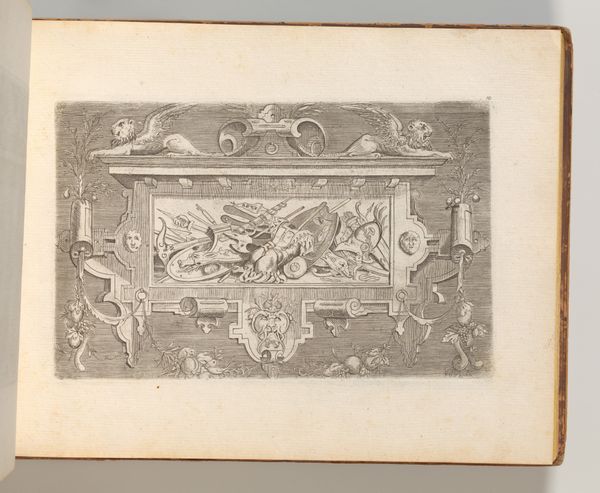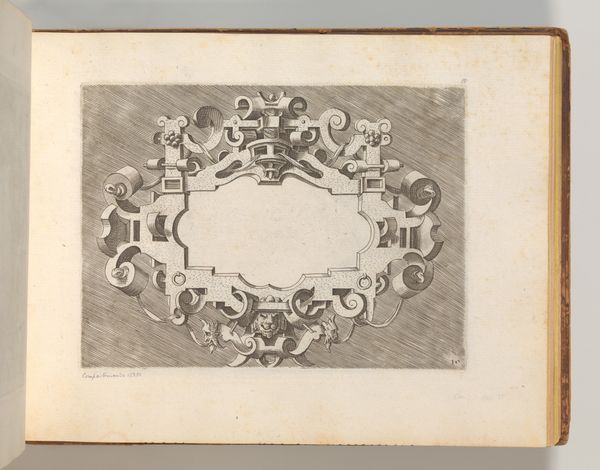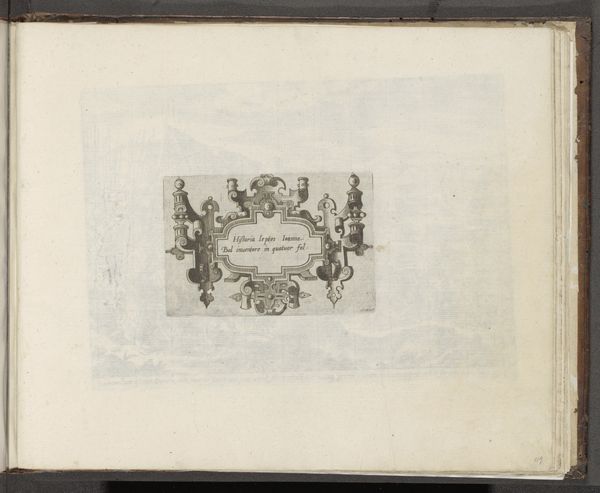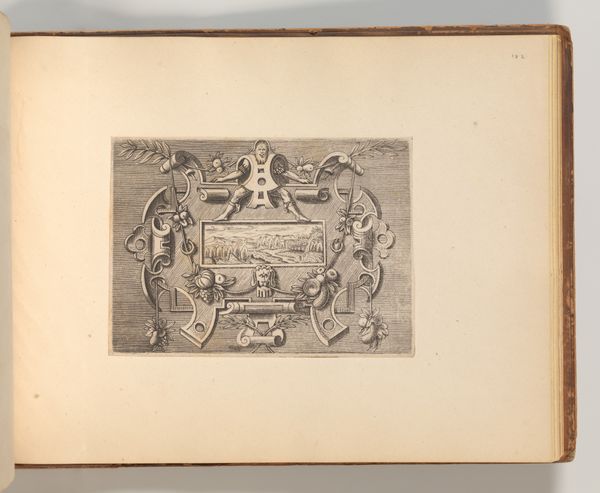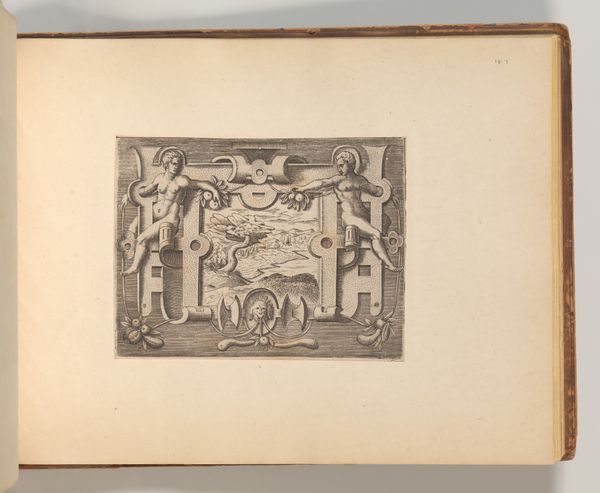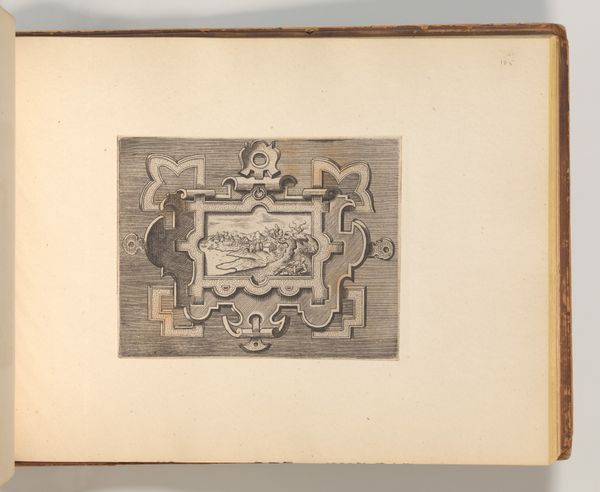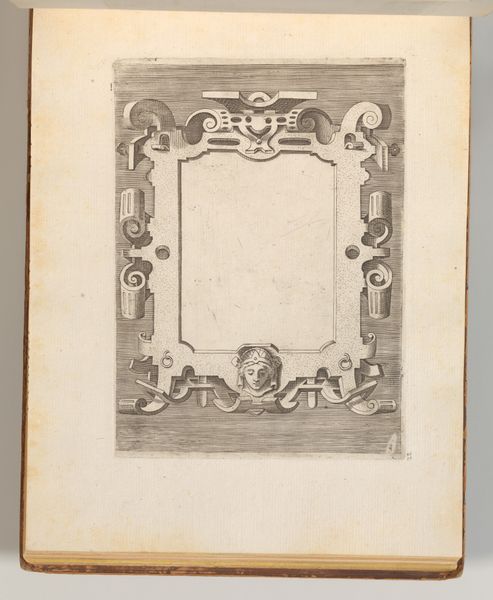
Targhe ed altri ornati di varie e capricciose invenzioni (Cartouches and other ornaments of various and capricious invention, page 15) 1555
0:00
0:00
drawing, graphic-art, ornament, print, intaglio, engraving
#
drawing
#
graphic-art
#
ornament
# print
#
intaglio
#
11_renaissance
#
italian-renaissance
#
engraving
Dimensions: Sheet: 7 7/8 × 10 5/16 in. (20 × 26.2 cm) Plate: 5 1/8 × 11 13/16 in. (13 × 30 cm) Overall: 8 1/4 × 10 5/8 in. (21 × 27 cm)
Copyright: Public Domain
Curator: This engraving from 1555, "Targhe ed altri ornati di varie e capricciose invenzioni" by Hans Vredeman de Vries, is held at the Met. I'm wondering, what strikes you most about it? Editor: It's really intricate. There's almost a sense of playful construction, but it also feels like a template. How was this type of ornamentation used in practice? Curator: Exactly. As a materialist, I’m fascinated by how prints like this functioned within the Renaissance economy. Consider the labor involved – the designer, the engraver, the printer, the bookbinder. Each contributing their specific skills. Then think of who it was for – not "high art" collectors necessarily, but artisans who needed designs for furniture, architecture, even personal adornment. It democratized design. What do you think that meant for those artisans? Editor: It’s like accessible customization! Before industrialization, it could allow workshops to diversify production or keep up with current Italian Renaissance trends in design, despite the physical distance. Do the monstrous heads suggest anything about the social status of ornament? Curator: Precisely! These weren't mass-produced objects in our modern sense. These prints dictated a specialized form of labour. Italian Renaissance ornamentation became highly coveted, and these plates would be prized. So the question is, how do we reassess our perspective on high and low art in the face of materiality and use value? Editor: It shifts the focus away from pure aesthetics, placing value on the skilled hands involved, and the artwork as a template and instruction. Thank you, this has totally changed how I think about Renaissance prints! Curator: My pleasure! Considering the means of production always offers a fresh lens.
Comments
No comments
Be the first to comment and join the conversation on the ultimate creative platform.





